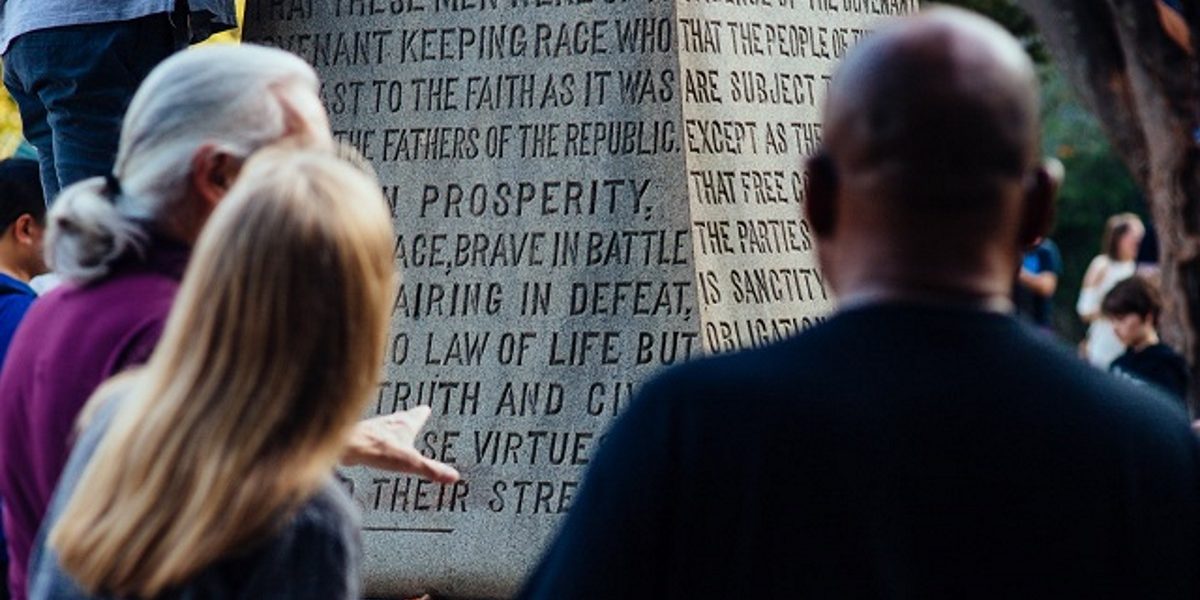DeKalb County Judge Orders Confederate Monument In Decatur Be Moved

Judge Clarence Seeliger’s order says the Confederate monument in Decatur Square should be removed by midnight on June 26.
Decaturish
Updated Saturday at 10:07 a.m.
A Georgia judge Friday ordered the relocation of a Confederate monument that stands in downtown Decatur.
DeKalb County Judge Clarence Seeliger’s order said the 30-foot obelisk in Decatur Square should be removed by midnight June 26 and placed in storage indefinitely.
The city, in a complaint filed Wednesday, argued that the monument had become a threat to public safety during recent protests about racism and police brutality. Seeliger agreed.
“In short, the Confederate obelisk has become an increasingly frequent target of graffiti and vandalism, a figurative lightning rod for friction among citizens, and a potential catastrophe that could happen at any time if individuals attempt to forcibly remove or destroy it,” Seeliger wrote.
“We were able to work within the existing law to resolve a problem,” Decatur City Manager Andrea Arnold told The Atlanta Journal-Constitution. “We didn’t have to ask for a law to be changed, the law was right there in front of us.”
Gov. Brian Kemp’s office declined to comment on Seeliger’s order.
DeKalb County has spent the last several years trying to rid itself of the Lost Cause monument, which was erected near the old county courthouse by the United Daughters of the Confederacy in 1908. A marker added last September says the monument was erected to “glorify the ‘lost cause’ of the Confederacy” and has “bolstered white supremacy and faulty history.”
Groups like Hate Free Decatur and Beacon Hill Black Alliance for Human Rights have been pushing for the monument to be removed since the 2017 “Unite the Right” rally in Charlottesville, Virginia.
“We are pleased to see DeKalb County has heard the will of the people and decided that this monument to white supremacy must go,” said Sara Paternaude, of Hate Free Decatur. “This and other monuments like those erected by the United Daughters of the Confederacy, including the genocide cannon located on the same property, are meant to denigrate and intimidate black people and people of color.”
The cannon Paternaude referred to is one used in the Creek War of 1836, which saw the removal of Native Americans from the South.
Demonstrators have been removing monuments they see as symbols of the United States’ ingrained racism since national protests began over the May death of George Floyd, who died after a police officer in Minneapolis pressed down on his neck with a leg for several minutes.
For Seeliger, who is retiring this year, the ruling on the monument bookends a judicial career that began when his election in 1980 ousted a judge who was infamous for illegally sentencing Martin Luther King Jr. to a chain gang in a misdemeanor traffic case in 1960. Seeliger’s first moves after taking over J. Oscar Mitchell’s courtroom included hiring the county’s first black bailiff and having him remove Mitchell’s Confederate flag, which he said was “unacceptable in a court of law.”
An exact timeline for the monument’s removal was unclear. But Arnold said Seeliger recommended that it be moved well in advance of the deadline.
“What happens (next) is the county gets a crane and it’s removed,” Arnold told the newspaper.








